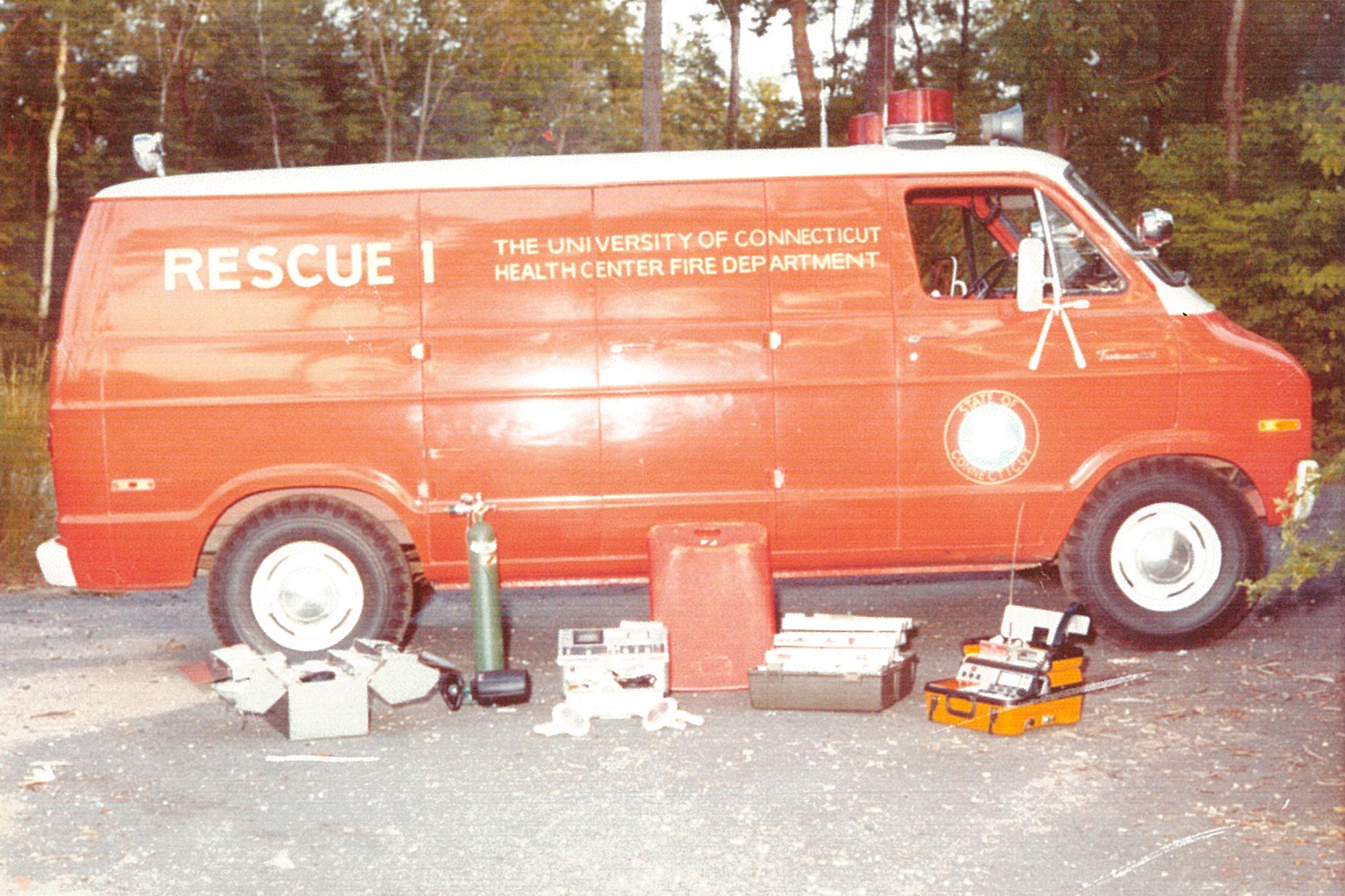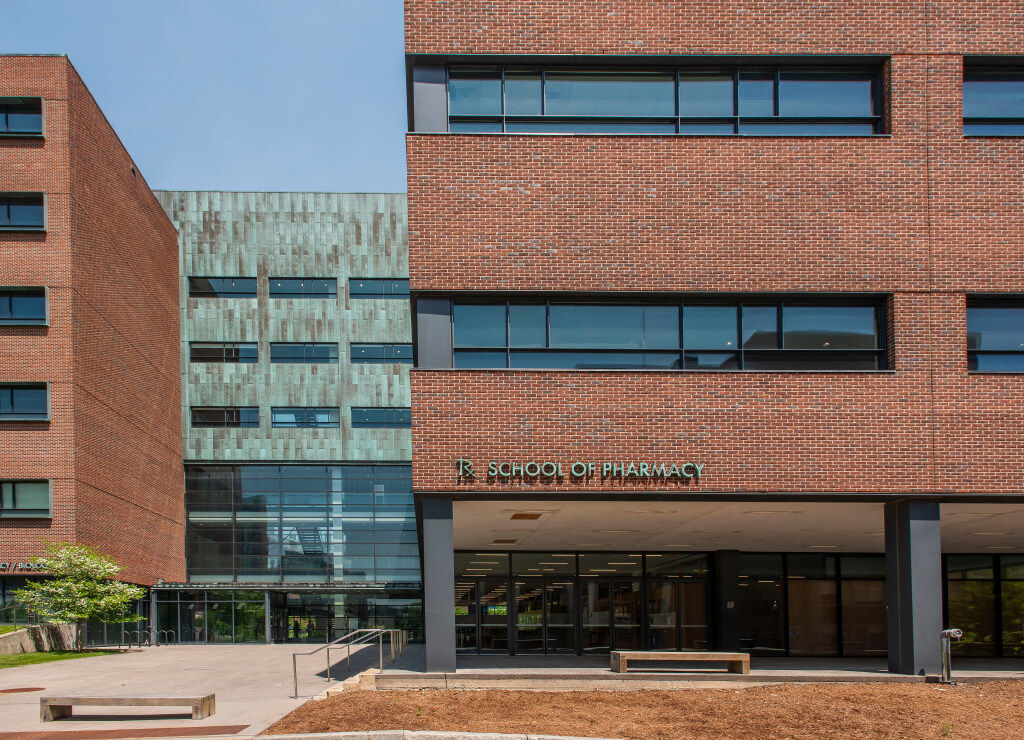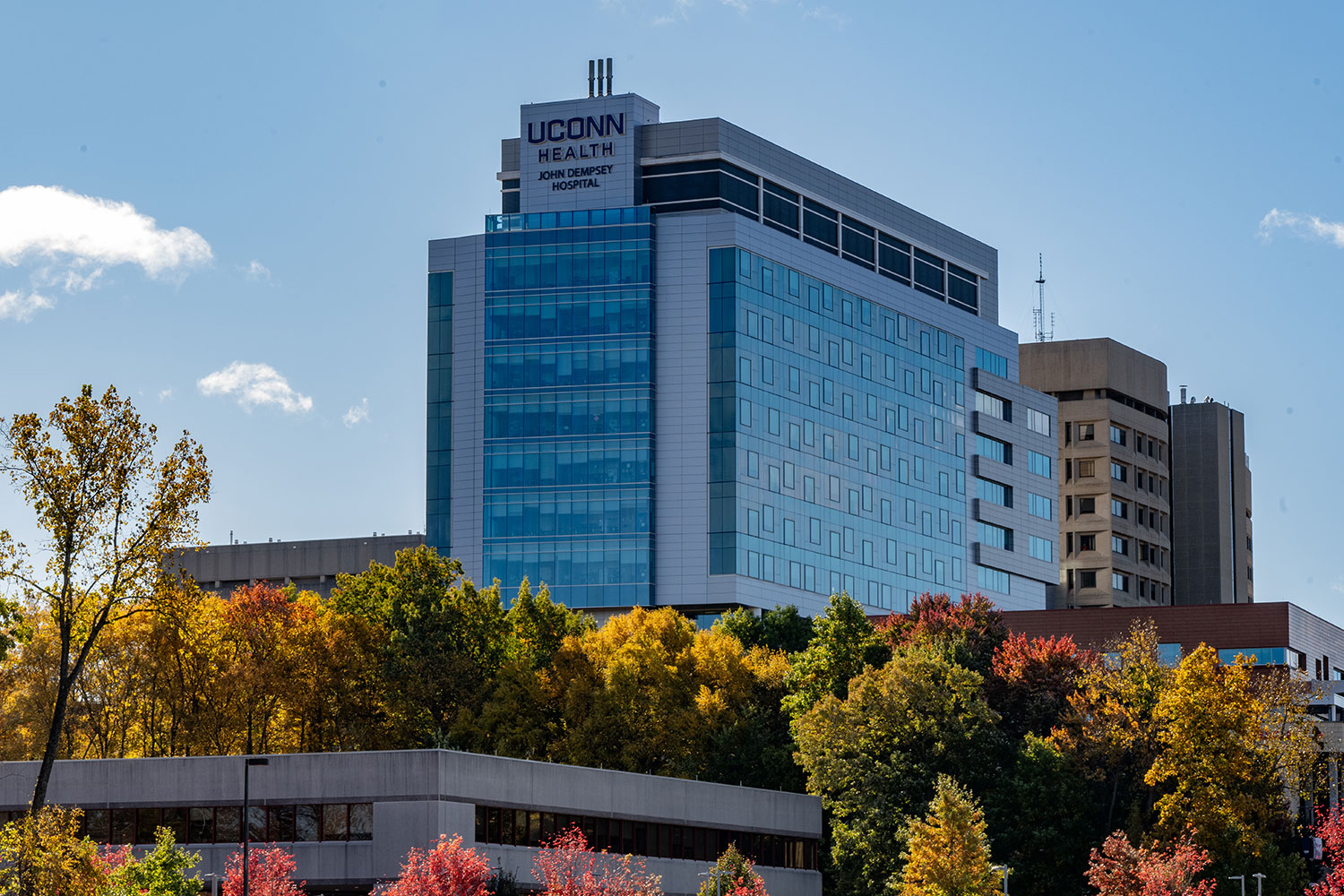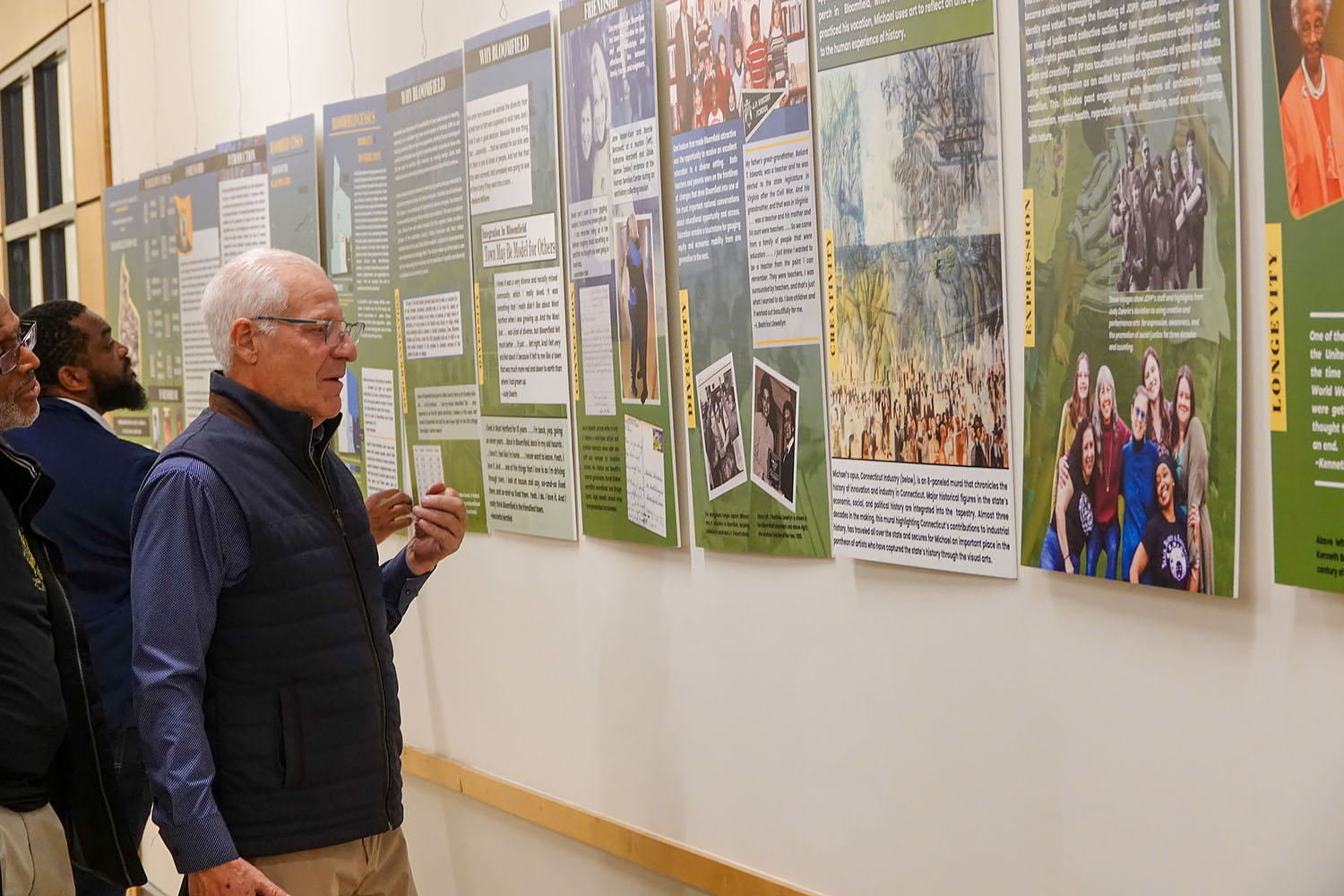Becoming a Presence in the Community
In the mid-1970s, paramedics were largely unheard of in the United States, except for some small pockets in Los Angeles, Seattle, and Jacksonville, Florida, and for those familiar with Squad 51 from the CBS television drama “Emergency!”.
That started to change when four UConn Health firefighters became paramedics in the late summer of 1975, but not without an adjustment period.
“When we first started here, we were lucky to get a call maybe once a month,” says retired firefighter Don Perrault, one of the original four UConn paramedics. “Nobody knew we existed and nobody knew what we were or what we did.”

The uncertainty made people uncomfortable. There were nurses who felt their jobs were threatened, physicians who saw paramedics as trying to be “junior doctors,” and firefighters who believed their duties stopped at dousing flames.
One nurse who had bought into the concept from the start was Irene Engel, then a nurse supervisor in the John Dempsey Hospital Emergency Department. In addition to helping establish the curriculum for the paramedic training class and finding nurses to help teach it, she helped break down barriers between nurses and these new, specialty-trained firefighters.
“Irene helped it get set up so that the nurses would actually ride with us on actual calls,” Perrault says. “And once that started, they had a better appreciation for when we brought a patient in who was cleaned up a bit more, and more stable, and then the nurses became our allies.”
Engel estimates it was around 1980 when paramedics gained general acceptance in the first-responder and medical communities.
“Squad 51 was our nickname a lot, because everybody knew it from the TV program, then all the sudden we’re showing up,” Perrault says.

Dave Smith, another of the original paramedics, remembers seeing a change in attitude from police officers at accident scenes as the years went by.
“After we were established, if we went up on the highway for an accident, troopers were more than happy,” Smith says. “They loved it when we showed up.”
Greg Metcalf, the public safety director on whose watch the UConn Health paramedic program was born, says it was the work of those first four UConn Health paramedics that went the farthest in gaining the community’s acceptance.
“Without the compassionate and professional mien of these first four pioneers, there never would have been community acceptance,” Metcalf says. “I posit that a very large majority of Farmington Valley residents developed a positive image of the University of Connecticut Health Center one exposure at a time to that silly little red truck thanks to those first four and now the rest of the UConn Health paramedics.”
The “silly little red truck” was a tricked-out Dodge Tradesman 100 van known as “Rescue 1.”
“We had to go out to all the civic organizations throughout Farmington Valley and practically sell the program and tell them what we did,” Perrault says.
“It was a novel concept,” says current UConn Health Fire Chief James Brown. “They were going everywhere. At one point they might have been servicing 20 communities.”
“All of a sudden we hear, ‘The president’s been hit,’ and right away I’m flashing back to JFK.” –Don Perrault, one of UConn Health’s original four paramedics
And within weeks of becoming paramedics, these UConn Health firefighters found themselves in another new role.
“President Ford was coming to Hartford and the Secret Service contact the Connecticut Office of Emergency Medical Services requesting a paramedic unit be detailed to the presidential motorcade,” Metcalf says.
And so began a relationship that would last into the late 80s. UConn Health paramedics would get the call for visits from heads of state.
In this additional capacity, they saw action right away, during Ford’s visit Oct. 14, 1975.
“We’re standing there and all of a sudden we hear, ‘The president’s been hit,’ and right away I’m flashing back to JFK,” Perrault says.
“Some kids came through the intersection and hit the president’s limousine, right in the back door where he was,” says Dave Smith, another of the original paramedics who was on duty that night. “It appeared they had the green light.”
“The police hadn’t blocked off the intersection,” Perrault says. “We pull up on the scene and those kids were still in the car, and they’re surrounded by Secret Service, locked and loaded on them. The presidential limo was gone, it had kept going. He was fine.”
Years later Smith and Rasmussen, another of the original paramedics, were on the security detail for a U.S. Senator from Tennessee who was in New England campaigning for the Democratic nomination for president.
“We had Al Gore,” Smith says. “We met him at a train station in Rhode Island, and we rode with him through all the train stations and he’d stop and get off and shake hands. And a couple times he’d shake my hand in the station. I said to one of the Secret Service guys, ‘Doesn’t he remember me? Doesn’t he know he just shook my hand at the last station?’ He says, ‘[Gore] doesn’t care about you. It’s a photo opp for him to be seen shaking hands with somebody with a white shirt and a uniform.’”
By this time, paramedics were well established throughout the country. Not lost on Metcalf though is the trailblazing transformation of four men from traditional firefighter to this revolutionary new type of first responder.
“Consider the incredible metamorphosis that was occurring with these four neat guys,” Metcalf says. “We were taking four big, hairy guys that were used to drowning fires with hundreds of gallons of water weighing many tons and in 90 days getting them comfortable administering a few milligrams of a life-saving drug intravenously to a child while the scared-to-death parents were looking on.”
Read The 1st Paramedics, Part 1: Origins
Read The 1st Paramedics, Part 3: A Legacy of Service and Education



